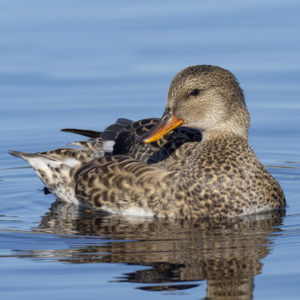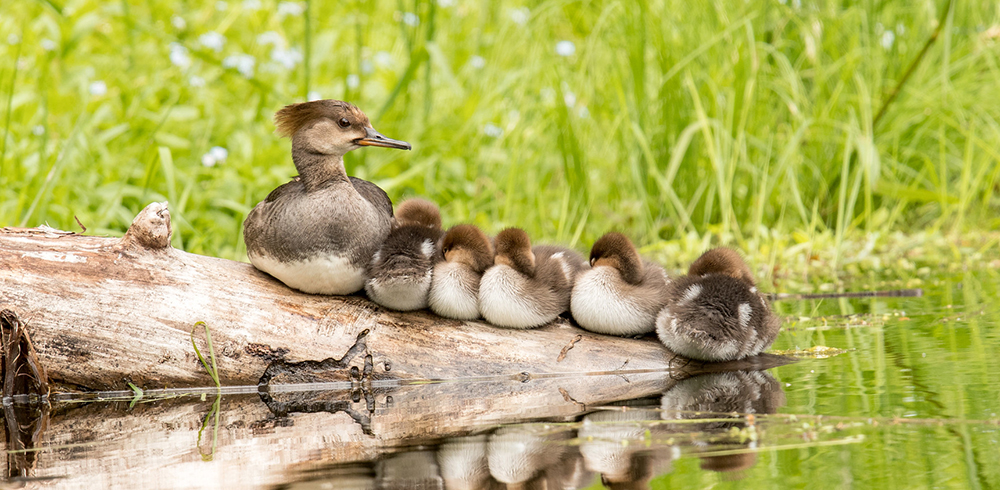
Gadwall by Mick Thompson
With most of the songbirds having long departed south, you would expect that marshes would be pretty quiet all winter-long. You would be incorrect! This is the time of year that waterfowl descend on our region in flocks that are thousands strong.
Only a handful of species occupy our waters year-round, such as the wood duck, hooded merganser, mallard, American black duck, Canada goose, and gadwall. But many more species that breed in the arctic, like the tundra swan and snow goose, take refuge in our local marshes and impoundments that rarely freeze.
Different species occupy different ecological niches. Some prefer to feed in sheltered marshes, dabbling for invertebrates and plants near the surface. Others, such as the surf scoter, can be found at the mouth of the James River, diving for fish even during the fiercest winter storm. All are relatively gregarious, hanging out in flocks that can number from just a few individuals to hundreds of thousands.
Populations of most waterfowl took a big hit in the 20th century due to commercial hunting. Large, boat-mounted “punt guns” could take out dozens of ducks in a single shot and numbers catastrophically dwindled. Thankfully, limits on hunting and careful conservation efforts by government and private organizations have removed much of the pressures that ducks, geese, and swans used to face.
However, habitat loss from the destruction of marshes and other wetlands continues to be a real problem. Projects being undertaken by the James River Association and our volunteers can help improve water quality!
Our living shorelines program creates marsh habitats that support these birds, and our River Hero Homes program is a way for you to pledge to adopt river-friendly practices that can help improve water quality. Would you like to learn more? Check out our watershed restoration webpage.
Featured image is of hooded mergansers by Mick Thompson.

